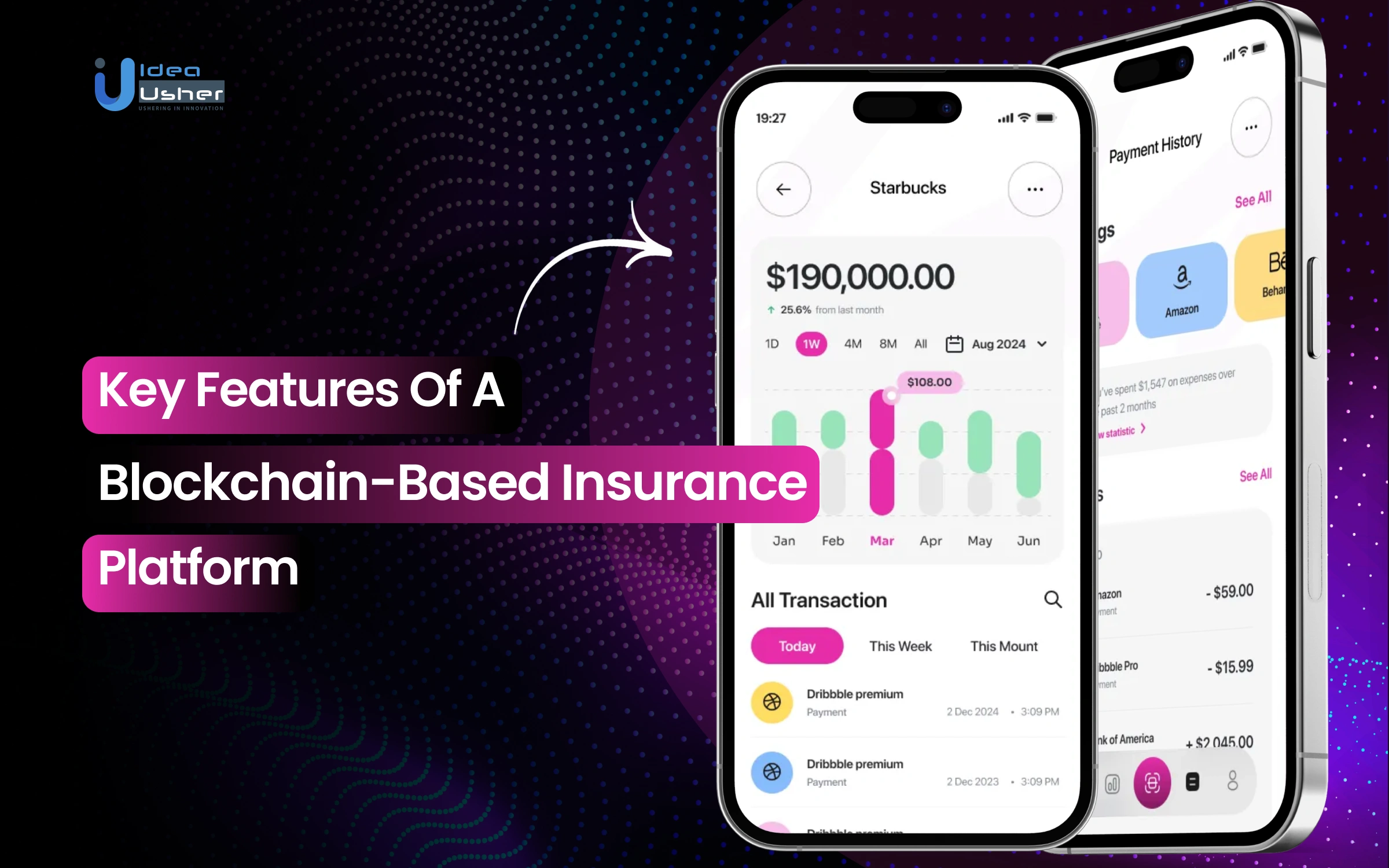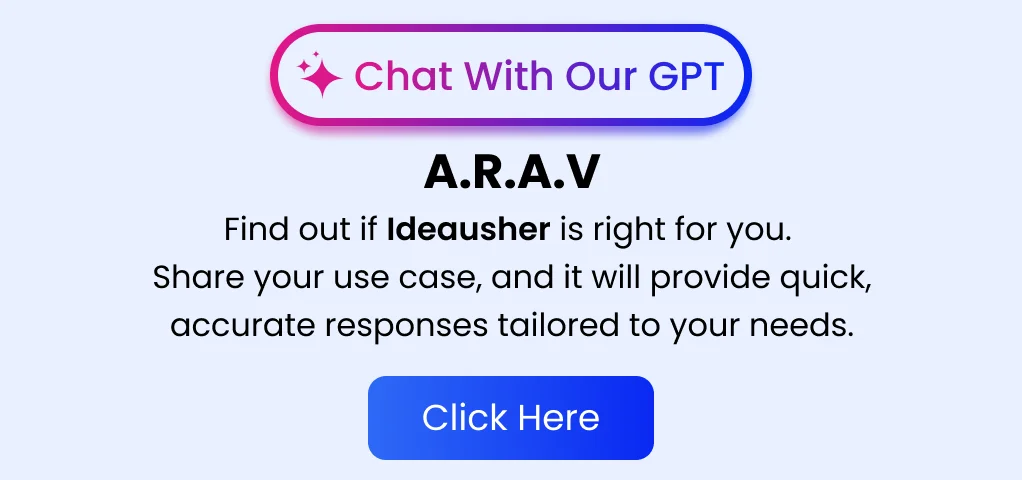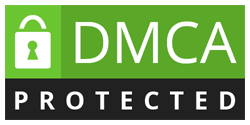Insurance has always been about trust, but traditional systems often make that trust hard to earn. Delayed claims, unclear policies, and manual verification often frustrate both insurers and customers. A blockchain-based insurance platform aims to solve these problems by adding automation, transparency, and security at every stage.
By storing policy data and transactions on a distributed ledger, blockchain ensures that claims are verifiable, smart contracts handle payouts automatically, and every record stays tamper-proof. This not only eliminates unnecessary intermediaries but also helps insurers cut costs and deliver faster, more reliable coverage.
In this blog, we’ll look at the main features that make blockchain-based insurance platforms so innovative. We’ll cover smart contract automation, decentralized data management, and real-time claim validation, and see how these changes are shaping the future of digital insurance. With the right vision and skilled development support, businesses can turn these features into scalable products that create real value. IdeaUsher helps enterprises take that step with secure, future-ready insurance solutions built around blockchain transparency and automation.

What Is a Blockchain-Based Insurance Platform?
A blockchain-based insurance platform is a decentralized ecosystem that automates the creation, execution, and settlement of insurance policies using blockchain technology. It eliminates intermediaries by leveraging smart contracts, ensuring transparent policy terms, real-time data validation, and faster claim settlements.
These platforms use blockchain’s reliability and smart contract automation to solve common insurance problems such as fraud, delays, and trust concerns. As a result, both insurers and policyholders benefit from a smoother, more transparent, and efficient process.
- Automated Policy Execution: Smart contracts automatically enforce policy terms and trigger actions (like payouts) when specific conditions are met.
- Trustless Claims Settlement: Removes the need for manual claim verification by connecting to trusted data oracles that validate events objectively.
- Transparency & Traceability: Every transaction is recorded on-chain, enabling full visibility into policy creation, premium payments, and claims.
- Reduced Administrative Costs: Automation reduces dependency on intermediaries and paperwork, optimizing operational efficiency.
- Fraud Prevention: Immutable records and data-driven triggers minimize the risk of fraudulent claims or data manipulation.
Blockchain-Based Insurance vs. Digital-Only Insurance Platform
Blockchain and digital technologies are reshaping insurance. Digital-only platforms automate and simplify processes, while blockchain enhances decentralization, transparency, and enables instant, trustless transactions.
| Aspect | Blockchain-Based Insurance Platform | Digital-Only Insurance Platform |
| Core Infrastructure | Built entirely on blockchain using smart contracts, decentralized ledgers, and oracle integrations. | Runs on centralized servers with digital interfaces but traditional backend systems. |
| Data Transparency | All transactions, policies, and claims are on an immutable public ledger for full transparency. | Records stored in proprietary databases, visible only to the insurer. |
| Claim Settlement | Smart contracts automatically trigger instant payouts once on-chain conditions are met. | Claims processed manually or semi-automatically, requiring human verification. |
| Trust Model | Trustless ecosystem – verification is algorithmic and decentralized; no need for intermediaries. | Relies on trust in the insurer’s internal processes and integrity. |
| Operational Efficiency | Near-instant execution with minimal human involvement, reducing operational costs and delays. | Faster than traditional models but still requires administrative oversight. |
| Governance | Community-driven through DAOs, where token holders vote on protocol updates and dispute resolutions. | Centrally governed by company management and regulatory compliance teams. |
| Premium Pricing | Dynamically adjusted based on real-time on-chain data, oracle feeds, and automated risk models. | Determined by actuarial teams using centralized data analytics. |
| Regulatory Framework | Operates within emerging regulatory models, emphasizing transparent smart contract audits. | Fully compliant with established insurance regulations and licenses. |
| Payout Verification | Uses parametric or oracle-based event data to instantly verify and execute payouts. | Verification involves manual checks and submission of supporting documents. |
| User Accessibility | Accessible with Web3 wallets; users control funds and interact with contracts. | Requires portal registration; funds and policies managed by insurer. |
How a Blockchain-Based Insurance Platform Works?
A blockchain insurance platform uses transparency, automation, and decentralization to eliminate middlemen and speed up verified, fraud-resistant claims. Smart contracts, oracles, and payment gateways create a trustless system. Here’s a step-by-step breakdown of how it works:
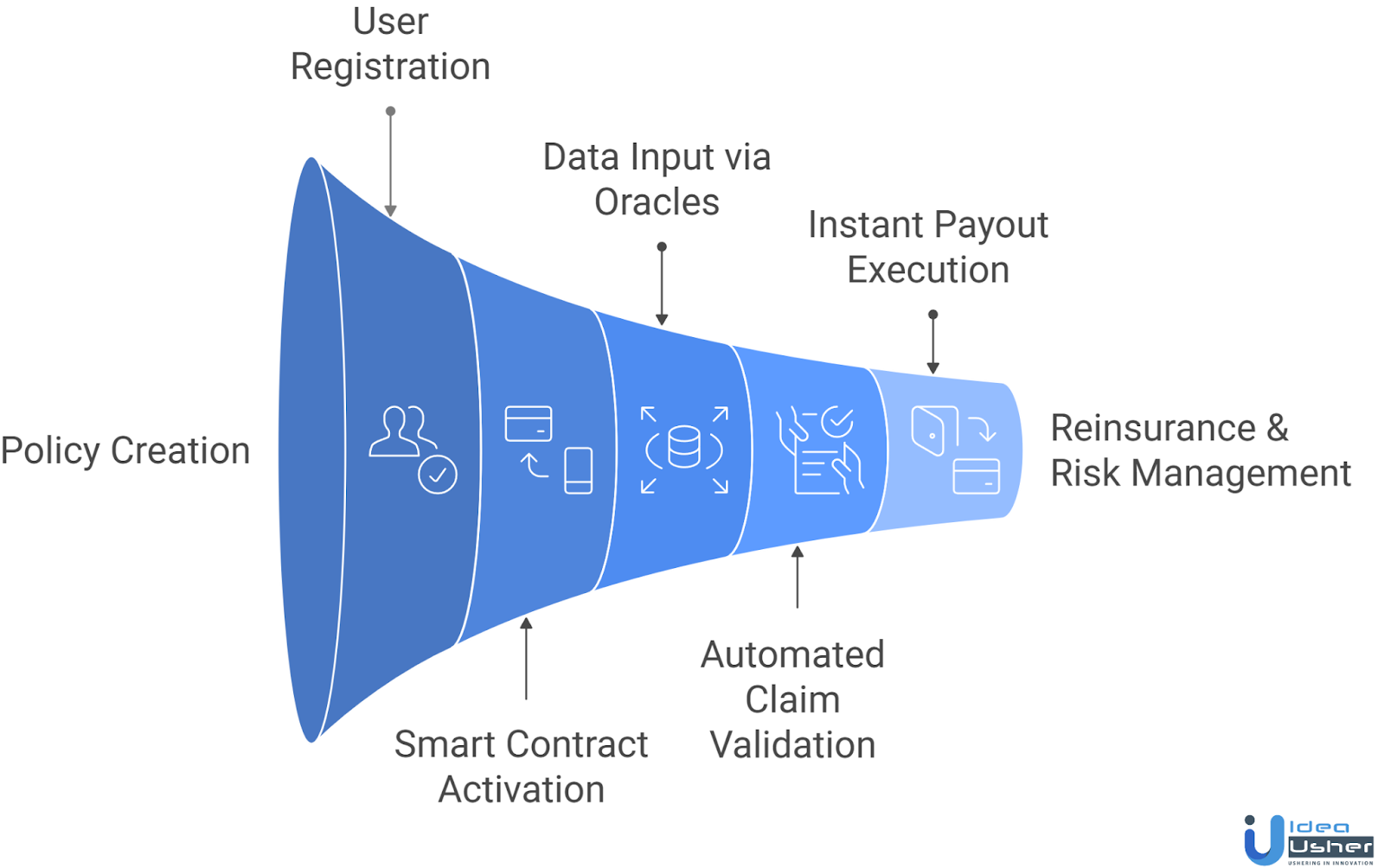
1. Policy Creation & Tokenization
The process begins when an insurer designs and publishes an insurance product on the blockchain.
- Each policy is tokenized as a digital asset (NFT or smart contract) that defines coverage terms, premiums, conditions, and claim triggers.
- Users can browse these insurance products through a web or decentralized app (dApp) interface.
Example: A farmer purchases a parametric crop insurance policy linked to rainfall data. The smart contract defines payout triggers (e.g., less than 50mm of rainfall in 30 days).
2. User Registration & KYC Verification
Before purchasing a policy, users must complete Know Your Customer (KYC) or identity verification.
- This can be done through decentralized identity (DID) protocols or integrated third-party KYC providers.
- The verified user’s details are stored securely on the blockchain, ensuring compliance and traceability without compromising privacy.
3. Smart Contract Activation
Once verified, the user pays the insurance premium using fiat or cryptocurrencies (like ETH, USDC, or native platform tokens).
- This payment activates the smart contract, locking the funds within the blockchain’s escrow system.
- The contract now acts as a self-executing digital agreement, ready to monitor and trigger payouts when certain conditions are met.
4. Data Input via Oracles
The platform uses blockchain oracles, such as Chainlink or API3, to bring real-world data like flight delays, rainfall, market trends, or medical records directly onto the blockchain.
- Oracles continuously update smart contracts with verified data sources.
- This ensures the insurance policy remains autonomous and tamper-proof, relying on factual inputs instead of manual submissions.
Example: For flight delay insurance, the oracle retrieves real-time flight data from aviation APIs to determine if a flight meets the delay condition.
5. Automated Claim Validation
When a covered event occurs (like a flight delay, crop failure, or medical emergency), the smart contract automatically validates the claim by cross-referencing oracle data.
- No human involvement or documentation is required.
- This ensures instant claim assessment, significantly reducing disputes or fraudulent requests.
6. Instant Payout Execution
Once the claim is verified, the smart contract releases the payout automatically from the escrowed funds to the user’s wallet.
- This could be in crypto or stablecoins, depending on the platform setup.
- The entire transaction is recorded immutably on the blockchain for transparency and auditability.
Example: In a parametric flood insurance policy, if rainfall exceeds the threshold, the farmer receives an automatic payout within seconds.
7. Reinsurance & Risk Pool Management
To balance risk exposure, insurers can tokenize and distribute policies into liquidity pools, allowing investors or other insurers to participate as underwriters.
- Blockchain-based reinsurance platforms ensure transparent sharing of premiums and claim data.
- Risk pools are managed through decentralized finance (DeFi) mechanisms, ensuring liquidity and scalability.
8. Data Transparency & Reporting
Every transaction, from paying premiums to settling claims, is permanently recorded on the blockchain.
- Regulators, reinsurers, and auditors can access immutable reports for compliance.
- Users can track their policy lifecycle in real time, enhancing trust and accountability.

Why is the Blockchain Insurance Platform Growing Rapidly?
The Blockchain in Insurance Market is valued at $1.99 billion in 2024 and is projected to reach $244.21 billion by 2031, with an 82.42% CAGR, driven by demand for automated claims, fraud prevention, and transparent operations through smart contracts.
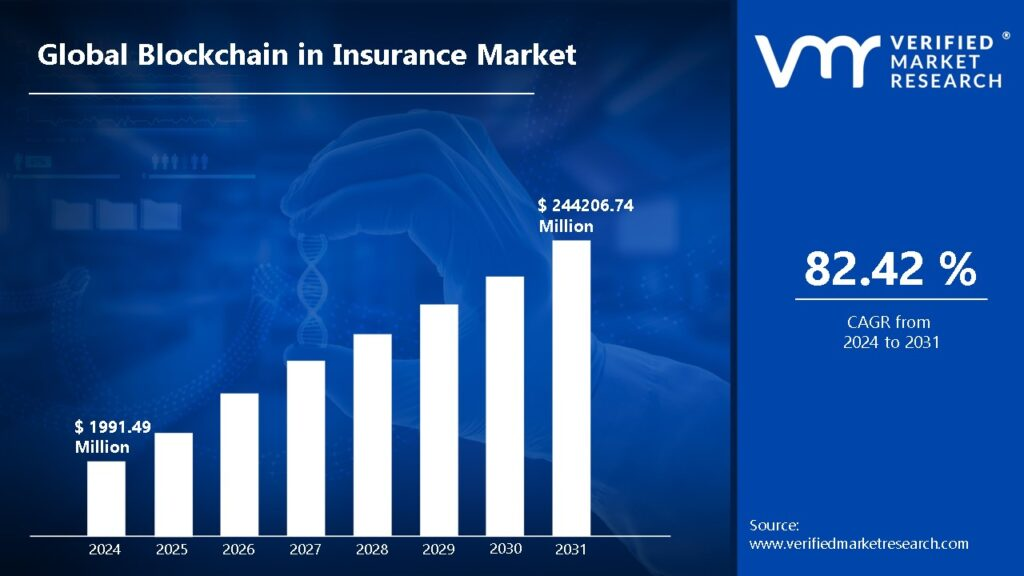
Otonomi, a blockchain-based cargo insurance platform, raised $3.4M to develop its infrastructure. It aims to reduce claims processing from weeks to 45 minutes using automated smart contracts, making cargo insurance more efficient.
Anthea Holding Limited, a crypto-insurtech firm, raised $22 million in Series A funding to launch the first life insurance product in Ethereum (ETH) and expand its market in Asia with Bermuda Monetary Authority approval.
These examples are part of a larger trend, showing how blockchain is transforming the insurance industry at every stage.
- Fraud reduction: One source notes that blockchain-based systems reduce fraudulent claims by ~25-30%, or reduce fraud application risk by up to ~65%.
- Reduced administration: Industry research shows potential operating cost reductions of 25-40% in policy administration and underwriting using smart contracts and ledger automation.
- Market access: Blockchain enables parametric insurance, tokenised risk pools and micro-insurance models that were previously difficult to scale. For example, one report noted ~30% lower operational cost for P2P insurance models.
- Better transparency: Studies show that ~56% of insurers recognise blockchain’s importance, though ~57% still don’t know how to capitalise on it, indicating strong interest in business model change.
The rapid growth of blockchain-based insurance platforms is driven by market opportunities, rising capital, and advantages like cost savings, fraud prevention, new products, and access to capital. For insurers and risk-carriers, it’s about rethinking insurance design, marketing, management, and capitalization. Early adopters may benefit from efficiency, innovation, and new revenue streams.
The $3.31 Trillion Blockchain Insurance Adoption Gap
Blockchain-based insurance represents a shift in trust, timing and transformation rather than just a technical evolution. Despite the $3.31 trillion digital asset market, only 11% of global crypto holders have insurance coverage, leaving many exposed due to the traditional insurance industry’s inability to address these risks.
The Protection Gap: Demand Is Rising, Supply Isn’t
The appetite for blockchain insurance is significant, with 42% of uninsured crypto holders ready to buy coverage and another 26% open to it. However, insurers hesitate due to limited historical loss data and the complexity of digital risk, creating a mismatch between demand for protection and the availability of providers.
The balance is changing as 58% of insurers plan to boost blockchain investment in 2025, mainly for claims automation and fraud prevention. Additionally, 77% anticipate that blockchain will be essential for policy issuance within two years, indicating the industry’s shift towards digital solutions.
Claims & Cost: Where Blockchain Delivers Proof, Not Promises
When blockchain is actually implemented, the impact is tangible.
- Blockchain-powered pilot systems have shown up to 25% fewer claim processing errors compared to legacy systems.
- Claim reimbursement times have improved by 30–40%, as smart contracts automatically verify claim data and trigger payouts within minutes.
- Investigation costs fell by 15%, thanks to immutable, easily auditable ledgers that eliminate manual document checks.
Put simply, this technology not only brings insurance online but also makes it more efficient, transparent, and easy to use.
Fraud Prevention: A $105 Billion Problem Meets Immutable Data
Insurance fraud is still one of the biggest challenges for the industry. In the United States, healthcare insurance alone loses about $105 billion each year. Blockchain technology is starting to offer a promising solution.
Roughly 48% of blockchain insurance adopters now use it primarily for fraud prevention rather than automation. Combining blockchain’s immutable records with AI-driven fraud detection has improved accuracy by 10–15% and reduced fraudulent claims by up to 25% in pilot programs.
Every transaction is time-stamped, verified, and securely stored on the blockchain, so claims cannot be changed after they are submitted. This level of protection is something traditional systems still find hard to achieve.
The Rise of Decentralized Insurance Protocols
Beyond enterprise adoption, a new frontier is forming in decentralized finance (DeFi). Here, insurance pools run on smart contracts and community-funded liquidity rather than centralized carriers.
DeFi’s Total Value Locked (TVL) jumped from under $1 billion in 2020 to over $61 billion by mid-2022, and decentralized insurers like Nexus Mutual and Armor Finance account for more than 80% of that market.
Surprisingly, about 65% of DeFi insurance payouts cover protocol hacks and exploits, not things like car accidents or natural disasters. Instead, they protect against code failures and cyberattacks, helping to safeguard the core of Web3.
Efficiency by Design: Claim in Minutes, Not Weeks
Traditional claims can drag on for weeks. Blockchain’s real-time validation changes that equation completely.
Platforms that use smart contracts and IoT-linked data, such as Etherisc for crop and weather insurance and IBM Blockchain Transparent Supply, have reduced settlement times to less than one hour.
Each step, from verification to approval and payout, happens automatically when certain conditions are met. This not only speeds up the process but also builds trust without any extra effort.
A Sector Poised for Reinvention
Claims management currently holds 24% of the blockchain insurance market share, followed by fraud detection (15%), underwriting and policy admin (15%), and identity management (10%).
As more people use blockchain insurance, these early numbers show more than just how the market is divided. They signal the beginning of real change. Blockchain insurance aims not only to improve efficiency but also to rebuild trust in a digital world where risks can outpace rules.
Use Cases of Blockchain-Based Insurance Platforms
Blockchain transforms insurance with faster and transparent automated claims. Key blockchain insurance features like immutability, smart contracts, and real-time data sharing reduce fraud and improve trust. From weather-based crop coverage to global reinsurance pools, blockchain is already reshaping the insurance industry with real-world solutions.
1. Parametric Insurance
Parametric insurance leverages blockchain and oracles to trigger automatic payouts when pre-defined weather conditions (like rainfall or temperature thresholds) are met, eliminating claim delays and manual verification.
Example: Etherisc is a decentralized insurance protocol offering blockchain-based crop insurance to smallholder farmers. It uses weather data oracles to verify rainfall and automatically distribute payouts without human intervention.
2. Smart Contract-Based Travel Insurance
Blockchain-powered travel insurance platforms automate compensation for flight delays, cancellations, or lost luggage through smart contracts, removing the need for paperwork or claim disputes.
Example: InsurePal (now VouchForMe) uses Ethereum smart contracts to issue instant compensation for delayed flights or missed connections.
3. Crypto Wallet Security Insurance
Given the increasing threats of hacks and private key losses, blockchain-based insurance can protect users’ digital assets and wallets. Smart contracts can verify breaches and execute claim settlements seamlessly.
Example: Nexus Mutual is a decentralized insurance alternative covering smart contract failures, exchange hacks, and wallet exploits, governed by token holders via a DAO model.
4. Supply Chain & Logistics Risk Coverage
Blockchain ensures traceability and authenticity across global supply chains. By linking shipment data to on-chain records, insurance providers can assess risks and automatically trigger coverage in case of delays, damages, or loss.
Example: B3i (Blockchain Insurance Industry Initiative) is a consortium of global insurers using blockchain for cargo, marine, and supply chain insurance, improving transparency and policy management.
5. Healthcare Claim Automation
Blockchain streamlines medical record verification and claim processing, ensuring privacy, transparency, and faster settlements between patients, hospitals, and insurers.
Example: BurstIQ focuses on blockchain-powered healthcare data exchanges, enabling insurers to validate treatment records securely for claim automation.
6. Reinsurance & Institutional Risk Pooling
Blockchain simplifies complex multi-party reinsurance contracts by recording all agreements and settlements on-chain, ensuring real-time reconciliation and reduced administrative costs.
Example: B3i Reinsurance is a blockchain reinsurance platform that enables insurers and reinsurers to manage contracts, premiums, and claims efficiently through shared ledgers.
Key Features of a Blockchain-Based Insurance Platform
A blockchain insurance platform needs automation, transparency, and real-time data to improve policy management and claims. These blockchain insurance features are divided into two stages: core features for the MVP and advanced features for future growth and innovation.
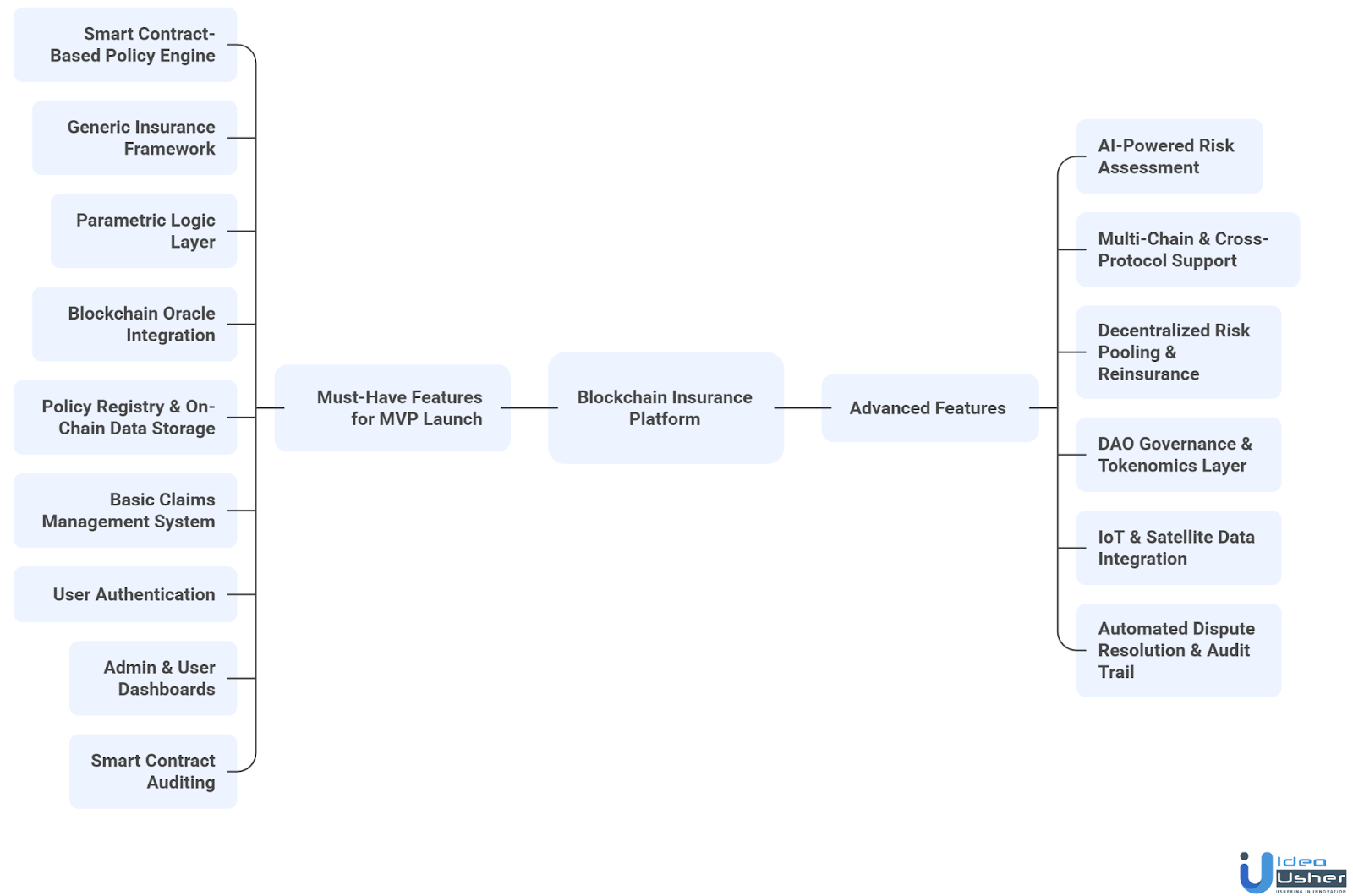
A. Must-Have Features for MVP Launch
Building a blockchain insurance platform begins with a strong MVP that emphasizes automation, transparency, and real-time validation. These core blockchain insurance features establish the technical and functional foundation for launching a compliant and scalable blockchain insurance product.
1. Smart Contract-Based Policy Engine
The platform uses a self-executing smart contract system that automates policy creation, validation, and claim settlement, ensuring all actions follow rules without manual intervention, building trust and reducing administrative work.
2. Generic Insurance Framework
The Generic Insurance Framework (GIF) offers a modular system allowing insurers to create and launch multiple insurance products with shared smart contract logic, reducing development time for new products like flight delay, crop, or property insurance.
3. Parametric Logic Layer
This module defines the conditions that trigger claims and payouts based on real-world data such as weather thresholds, system downtime, or flight delays. It ensures objective, fast, and data-driven claim execution without manual verification.
4. Blockchain Oracle Integration
Oracles connect the platform to reliable off-chain data sources, fetching verified information from APIs, IoT devices, or satellite feeds. Multi-source validation ensures accuracy and prevents false triggers, maintaining system integrity.
5. Policy Registry & On-Chain Data Storage
A decentralized ledger records every policy, claim, and payout on-chain, offering full auditability and transparency. This immutable registry ensures that all transactions and events can be verified by users, auditors, and regulators at any time.
6. Basic Claims Management System
The claim management module verifies events against policy parameters and executes payouts automatically through smart contracts. It minimizes disputes, eliminates delays, and ensures fair, transparent compensation for all stakeholders.
7. User Authentication
Compliance modules verify user identities and prevent fraudulent activities, aligning with international KYC/AML standards. This helps build trust among insurers, reinsurers, and regulators.
8. Admin & User Dashboards
User-friendly dashboards allow policyholders to track their active coverage, claims, and payouts in real time, while admin panels enable insurers to monitor policy performance, manage pools, and handle configuration settings efficiently.
9. Smart Contract Auditing
The MVP uses strong security measures such as third-party audits, bug bounties, and regular code reviews to catch vulnerabilities early. Ongoing monitoring helps keep all modules safe and protected from tampering.

B. Advanced Features (Post-MVP Considerations)
Once the MVP is validated and the platform gains traction, adding advanced blockchain insurance features can boost scalability, governance, and ecosystem integration. These enhancements help evolve the product into a decentralized insurance system capable of handling complex operations.
1. AI-Powered Risk Assessment
Integrating AI and machine learning enables the platform to analyze data and risk factors to calculate premiums dynamically. These algorithms improve pricing, reduce loss ratios, and boost underwriting performance.
2. Multi-Chain & Cross-Protocol Support
To expand beyond a single blockchain, the platform can integrate with multiple chains (like Ethereum, Polygon, or BNB Chain). This blockchain insurance feature allows users to access insurance services across ecosystems and helps insurers diversify liquidity pools and product offerings.
3. Decentralized Risk Pooling & Reinsurance
Advanced liquidity modules enable users, investors, or institutions to contribute to decentralized risk pools. Smart contracts manage capital allocation, ensuring transparent underwriting and scalable reinsurance models that protect against large-scale claim events.
4. DAO Governance & Tokenomics Layer
A decentralized governance system lets community members vote on policy terms, premium changes, and platform updates. The platform uses a native utility token for staking, rewards, and governance, which helps build an active, user-focused community.
5. IoT & Satellite Data Integration
In fields like agriculture and logistics, using IoT and satellite data helps track real-time conditions such as rainfall, temperature, or shipping delays. These integrations enhance blockchain insurance features by making parametric triggers more accurate and dependable.
6. Automated Dispute Resolution & Audit Trail
Blockchain-based arbitration mechanisms manage claim disputes through community voting or algorithmic validation. A full on-chain audit trail ensures every decision is traceable, reducing conflicts and enhancing transparency.
Cost to Build a Blockchain-Based Insurance Platform
Building a blockchain-based insurance platform involves stages like architecture design, smart contract development, oracle integration, and compliance setup. The total cost varies based on the platform’s complexity, necessary blockchain insurance features, and specific use case.
| Development Phase | Description | Estimated Cost |
| 1. Consultation | Understanding business goals, target users, and coverage types; defining triggers, payout logic, and compliance needs. | $3,000 – $6,000 |
| 2. Market Research | Analyzing competitors, global trends, and regulatory frameworks (KYC, AML, licensing) to ensure compliance and market fit. | $4,000 – $7,000 |
| 3. System Design & Planning | Designing scalable, modular architecture with integration layers for smart contracts, oracles, and risk pools. | $6,000 – $10,000 |
| 4. Core Module Development | Building and deploying core smart contracts for policy automation, claims execution, and parametric triggers. | $15,000 – $25,000 |
| 5. Data Oracle & API Integration | Connecting reliable oracles (e.g., Chainlink) and data APIs for weather, IoT, or event-based trigger validation. | $8,000 – $15,000 |
| 6. Risk Pooling & Tokenization Layer | Implementing decentralized pools for liquidity, staking mechanisms, and token-based capital allocation. | $12,000 – $20,000 |
| 7. User Dashboard Development | Creating user-friendly Web3 dashboards for insurers and policyholders to manage policies, claims, and funds. | $7,000 – $12,000 |
| 8. Security & Audit | Conducting smart contract audits, penetration testing, and compliance integration. | $6,000 – $10,000 |
| 9. Testing | Unit, integration, and simulation testing for smart contracts, oracle data, and risk models. | $4,000 – $8,000 |
| 10. Deployment | Deploying on secure blockchain networks and scalable cloud infrastructure. | $5,000 – $9,000 |
| 11. Post-Launch Maintenance | Monitoring, bug fixes, version upgrades & feature enhancements based on user feedback. | $3,000 – $6,000 / month |
Total Estimated Cost: $65,000 to $140,000
Note: The total cost of developing a full-fledged blockchain-based insurance platform depends on the platform’s complexity, the blockchain network, and the scope of blockchain insurance features.
Consult with IdeaUsher to get an exact cost estimation, tailored roadmap, and development strategy for your on-chain insurance solution.
How IdeaUsher Will Help to Build a Blockchain-Based Insurance Platform?
At IdeaUsher, we help businesses build blockchain insurance platforms with smart contracts, decentralized data validation, and AI analytics. From architecture design to oracle integration and compliance, we deliver scalable, secure, transparent solutions.
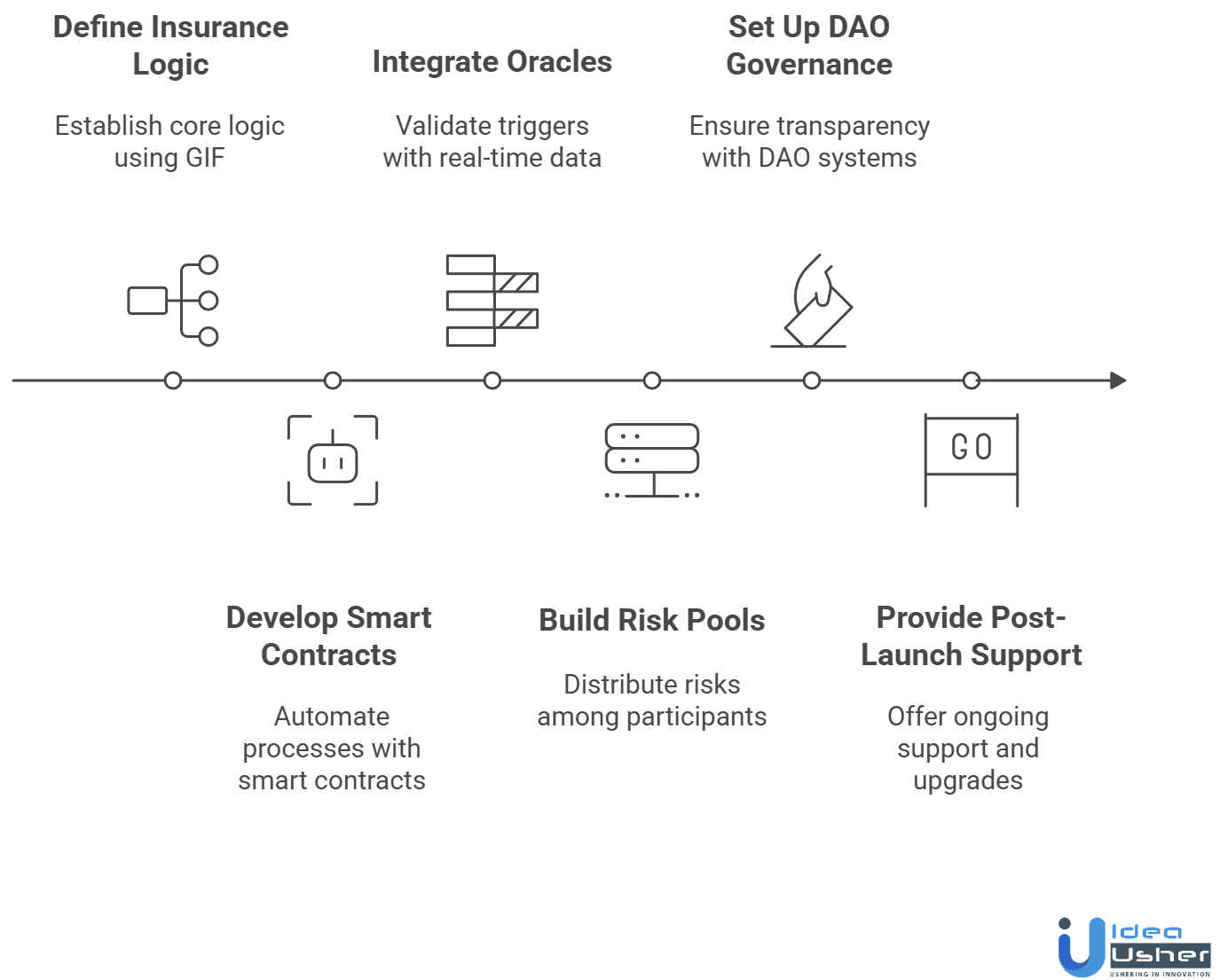
1. Defining Insurance Logic & Product Framework
Our experts design your platform’s core logic using frameworks like the Generic Insurance Framework (GIF) to set up modular insurance products. This ensures flexibility for adding new policy types or adjusting coverage terms without complex reprogramming.
2. Smart Contract Development & Audit
We develop and thoroughly audit smart contracts to automate policy issuance, claim verification, and payout processes, eliminating human error and ensuring tamper-proof execution.
3. Oracle & Data Feed Integration
By integrating trusted oracles and real-time data sources, we enable your platform to validate triggers and external events (like flight delays, weather conditions, or market changes) in real time, ensuring accurate claim settlements.
4. Decentralized Risk Pool & Reinsurance Model
IdeaUsher builds tokenized risk pools and decentralized reinsurance mechanisms that distribute financial risks among participants, providing greater liquidity, transparency, and reduced dependency on intermediaries.
5. DAO Governance & Analytics
We set up DAO-based governance systems that handle voting, fund management, and policy updates. This gives stakeholders full transparency. Our analytics module also tracks claim trends, user activity, and policy performance.
6. Post-Launch Support
Our work with you continues after deployment. We offer ongoing support, regular blockchain insurance feature upgrades, and performance improvements to help your insurance platform stay ahead in blockchain innovation.
Conclusion
A Blockchain-Based Insurance Platform brings transparency, automation, and security to the forefront of the insurance ecosystem. By relying on smart contracts and verifiable data, insurers can streamline claims, reduce fraud, and deliver more trust driven customer experiences. The right blockchain insurance features, from decentralized policy management to oracle integrations, can transform how coverage is purchased, validated, and paid out. As insurance continues to evolve with digital innovation, adopting blockchain capabilities offers a scalable and efficient foundation for future growth. This shift is setting a strong path toward fairer and faster insurance services for users.
Work with Ex-MAANG developers to build next-gen apps schedule your consultation now
FAQs
Smart contracts eliminate manual checks by enforcing policy rules automatically. This reduces delays in claims settlement, improves accuracy, and boosts customer satisfaction through efficient operations.
Oracles supply verified data like weather conditions or flight statuses, allowing claims to be validated instantly. This ensures accurate payouts and reduces disputes between insurers and users.
A decentralized database protects sensitive insurance information from tampering and single point failures. It increases data transparency and builds trust among stakeholders who rely on accurate and secure records.
A smooth user experience simplifies complex insurance workflows such as policy selection and claims submission. Clear dashboards and guided steps encourage higher engagement and customer confidence in digital insurance systems.
